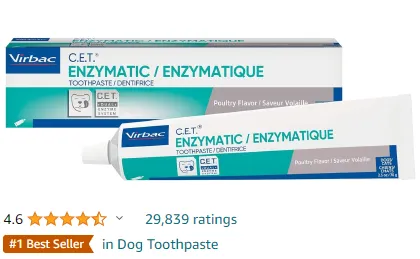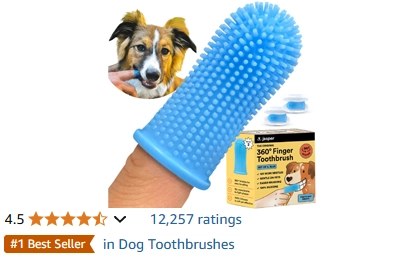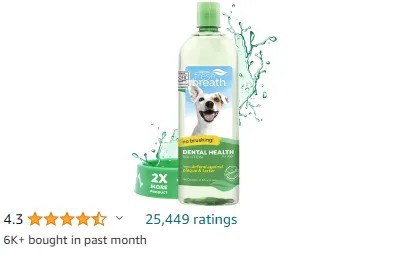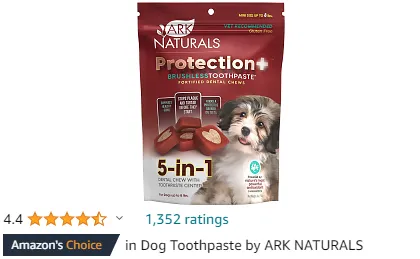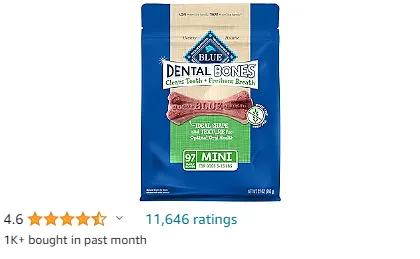Dog owners often overlook the importance of dental hygiene. It's sadly too common for dogs to suffer from rotten teeth and infections before owners even realize they were supposed to provide proper dental care.
Don't wait until it gets this bad—clean your Sheltie's teeth from a young age and protect her from a lifetime of dental pain and disease. It's never too late to start a dental hygiene routine. Neglecting your Sheltie's teeth is serious business, leading to chronic pain, loss of teeth, potential complications, and expensive vet bills.
Step 1: Brushing
Take care of your puppy's oral health. Brush his teeth nightly with a puppy toothbrush and dog toothpaste. It's always awkward at first, but repeat exposure will get him used to the sensation of the brush in his mouth. And it's absolutely worth the fuss (scroll down to see the stages of periodontal disease in dogs).
Hold your Sheltie's mouth open gently but firmly. Hold the toothbrush at a 45-degree angle to the tooth, with the bristles pointing toward the gumline. Move the brush in small circles, directing plaque and debris away from the gums.
Work from the back teeth toward the midline of your Sheltie's mouth, then switch to the other side. Apply gentle pressure only—never scrub! Once you've brushed every tooth, use the brush to gently massage the gums to help strengthen and condition them.
Step 2: Water Additives
Besides toothbrushing, use a water additive that serves as a natural mouthwash. Designed for your Sheltie's water bowl, water additives are safe to drink and stay in the saliva for hours, fighting plaque and tartar. Extra measures like this can reduce the likelihood of painful cavities and tooth extractions down the line.
Step 3: Dental Chews
If you don't plan to brush your dog's teeth every day, brushless alternatives are designed to stop plaque and tartar before they start, while forming a protective layer on the teeth. Dental chews mechanically loosen existing tartar while stimulating saliva to protect against plaque forming. Be sure to choose the right size dental chews for your puppy and upsize as his jaw grows and he gets his adult teeth.
Step 4: Professional Teeth Cleaning
At your dog's annual vet check, your vet will advise if your Sheltie needs her teeth cleaned under a general anesthetic. Don't be alarmed if this is the case; having your vet deep clean your dog's teeth is a valuable measure to prevent the development of periodontal disease.
While your Sheltie is asleep, your vet will use professional dentistry tools to remove hardened tartar, treat any cavities or tooth decay, and if necessary, extract any teeth that are damaged beyond repair. They can also take x-rays to check for bone density loss associated with advancing periodontal disease.
The 4 Stages of Periodontal Disease in Dogs
Failing to clean your Sheltie's teeth will send her down the predictable road of tooth decay and periodontal disease. This involves progressive damage to your Sheltie's teeth and gums, chronic pain leading to suffering and behavioral problems, and tooth loss. Here's how periodontal disease develops in dogs:

Stage 0: Plaque. Glycoproteins in your Sheltie's saliva stick to the teeth, creating the soft plaque that collects on a daily basis. Bacteria colonize these glycoproteins and release acidic by-products, which then attack the protective mucosal lining of your Sheltie's gums.
Stage 1: Gingivitis. The soft plaque hardens into yellow-brown tartar, while bacteria leak into the gums, infecting the tissue and creating inflammation. Acids and toxins from the bacteria, plus enzymes from dead white blood cells, further damage the delicate gum tissue, creating pain and redness.
Stage 2: Early Periodontitis. Both the gums and ligaments that hold your Sheltie's teeth in place are now affected. Her teeth are no longer secure in the socket, with up to 25% of tooth attachment lost. Demineralization of the bone reduces bone density and further reduces support for the teeth.
Stage 3: Moderate Periodontitis. All of the soft and hard structures around the teeth are now infected and damaged. The dog has lost between 25% and 50% of tooth attachment, while showing extensive tartar. Treatment involves tooth extraction and root planing under general anesthesia.
Stage 4: Advanced Periodontitis. Severe bone loss leads to significant pain, bleeding gums, tooth loss, and potentially severe infections. In the final stage, there is more than 50% loss of tooth attachment. Now deep in the tissues and bone, bacteria can spread to other parts of the body and create chronic inflammation.
Final Thoughts
Cleaning your Sheltie's teeth is important to their overall health and wellbeing. Burying the issue can lead to serious problems, not only with your Sheltie's teeth, but with wider systemic illness and infection.
Fortunately, you can keep your Sheltie's teeth clean and healthy at minimal cost and without pain. Daily teeth brushing, water additives, dental chews, and professional cleaning when necessary will make a huge difference to her oral hygiene and her overall quality of life.
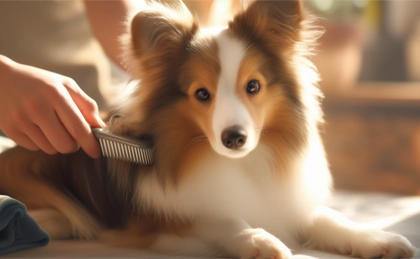
How to Groom a Sheltie
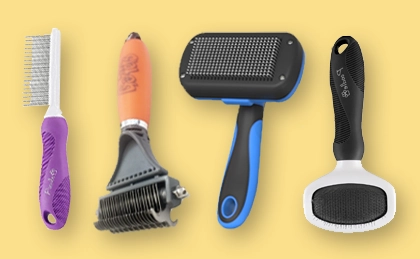
The Best Brushes for Shelties

The Best Dog Beds for Shelties
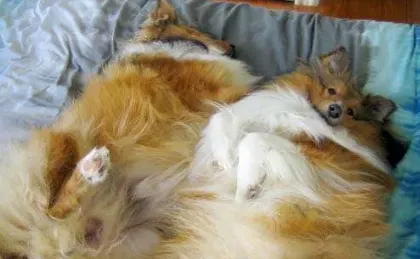
Does Your Dog Back Sleep?
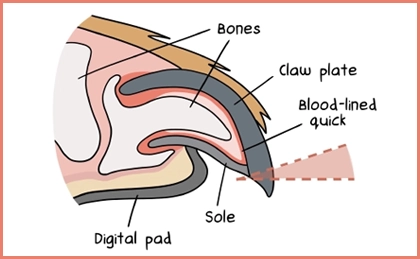
How to Trim Your Sheltie's Nails
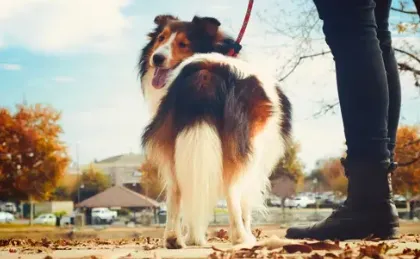
Fear of Leash Walking
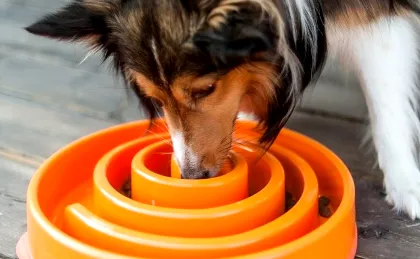
The Best Slow Feeder Bowls
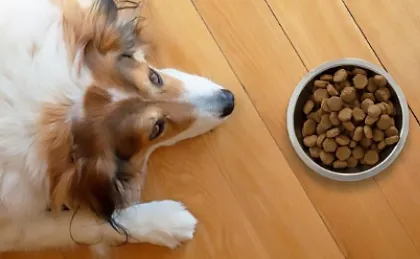
What's The Best Dog Food?


